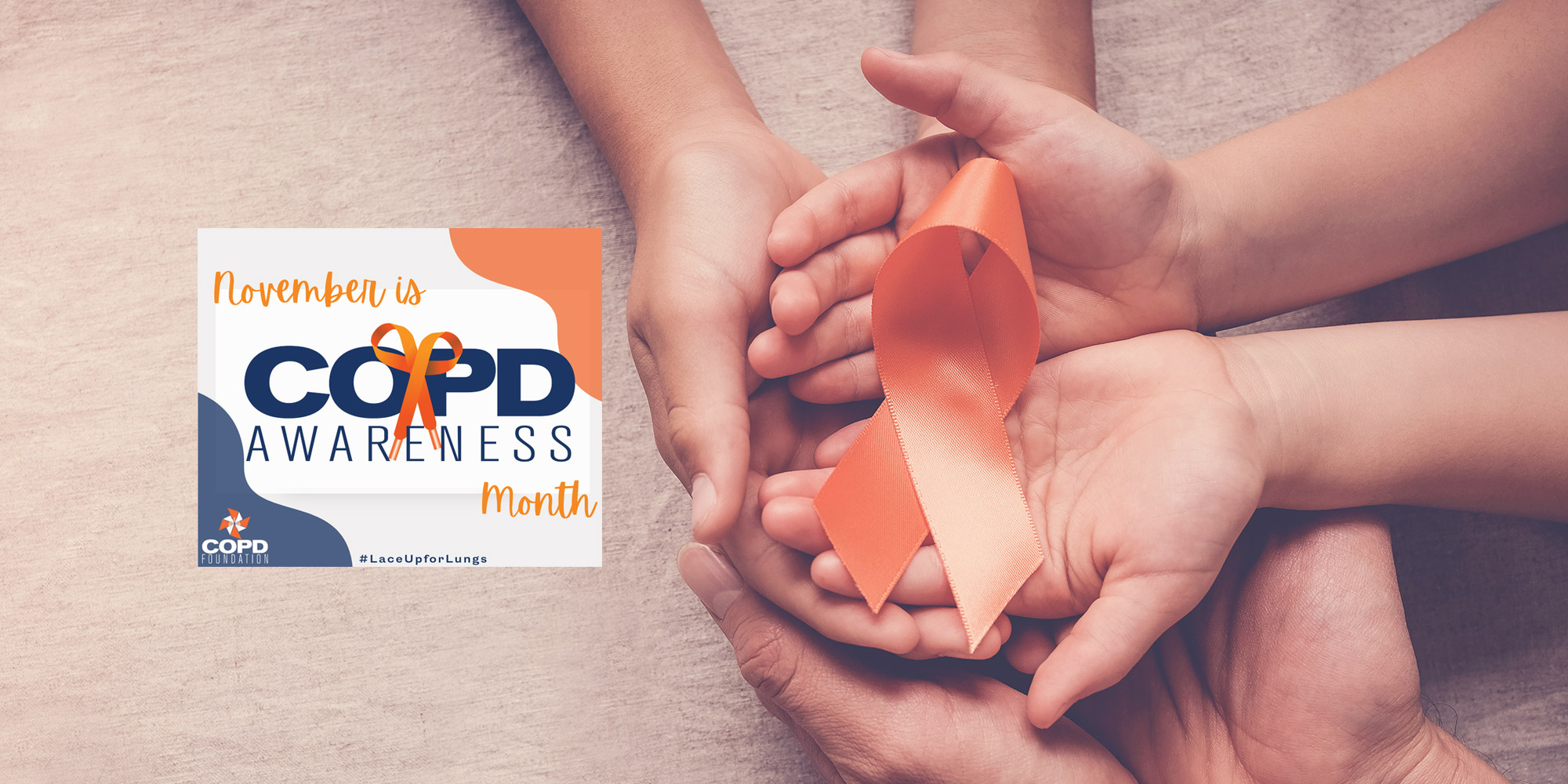
In a nation where chronic obstructive pulmonary disease (COPD) is the sixth-leading cause of death, dedicating a month to awareness and education only makes sense.
That’s why November is designated as National COPD Awareness Month by the COPD Foundation and the National Heart, Lung and Blood Institute (NHLBI) which is part of the National Institutes of Health (NIH).
The Learn More Breathe Better campaign by NIH helps mark the awareness month by recognizing the spectrum of those who care for people with COPD and offering tools to help.
The COPD Foundation reports that 16 million adults in the U.S. have COPD, while millions more go undiagnosed. The disease is incurable but can be treated.
Globally, COPD is the third-leading cause of death. An estimated 3.2 million people die worldwide, with more than 150,000 of them in the U.S. alone.
Despite the high number of deaths, COPD is ranked just 176th in research funding in the U.S., according to the COPD Foundation.
An umbrella term used to describe a variety of chronic lung diseases, including emphysema and chronic bronchitis, COPD’s main characteristic is breathlessness.
Because the disease can progress for years if undiagnosed, patients should talk to a healthcare provider if they experience:
The COPD Foundation also provides a COPD population screener to help patients identify their likelihood of having or developing COPD.
Early diagnosis helps reduce lung damage and can help improve quality of life as patients learn to manage the disease.
COPD navigators, who follow patients into post-acute care and beyond, have been shown to reduce hospital readmissions by 50 percent, Daniel Garrett, executive director of the American Association for Respiratory Care (AARC), told Single-Use Endoscopy in this recent Q&A.
A relatively new role, COPD navigators work with patients along the continuum of care to help them meet their goals and optimize their chronic lung disease management. In many cases, RTS are taking on the COPD navigator role to advocate for patients to receive needed care at the acute stage followed by the education and follow-up care necessary to keep extreme breathing problems from reoccurring.
A recent study out of Canada, published in BMJ Open Respiratory Research, found that older adults often fall victim to misidentification of their medical symptoms, with COPD frequently being over diagnosed or underreported.
The misclassification is associated with higher respiratory symptom burden, healthcare usage and lower physical performance, according to the research. Such errors in identifying the disease may result in missed opportunities to provide disease-specific therapy.
The American Lung Association warns that women often are misdiagnosed, because COPD has long been considered a man’s disease and doctors do not expect to see it in women.


